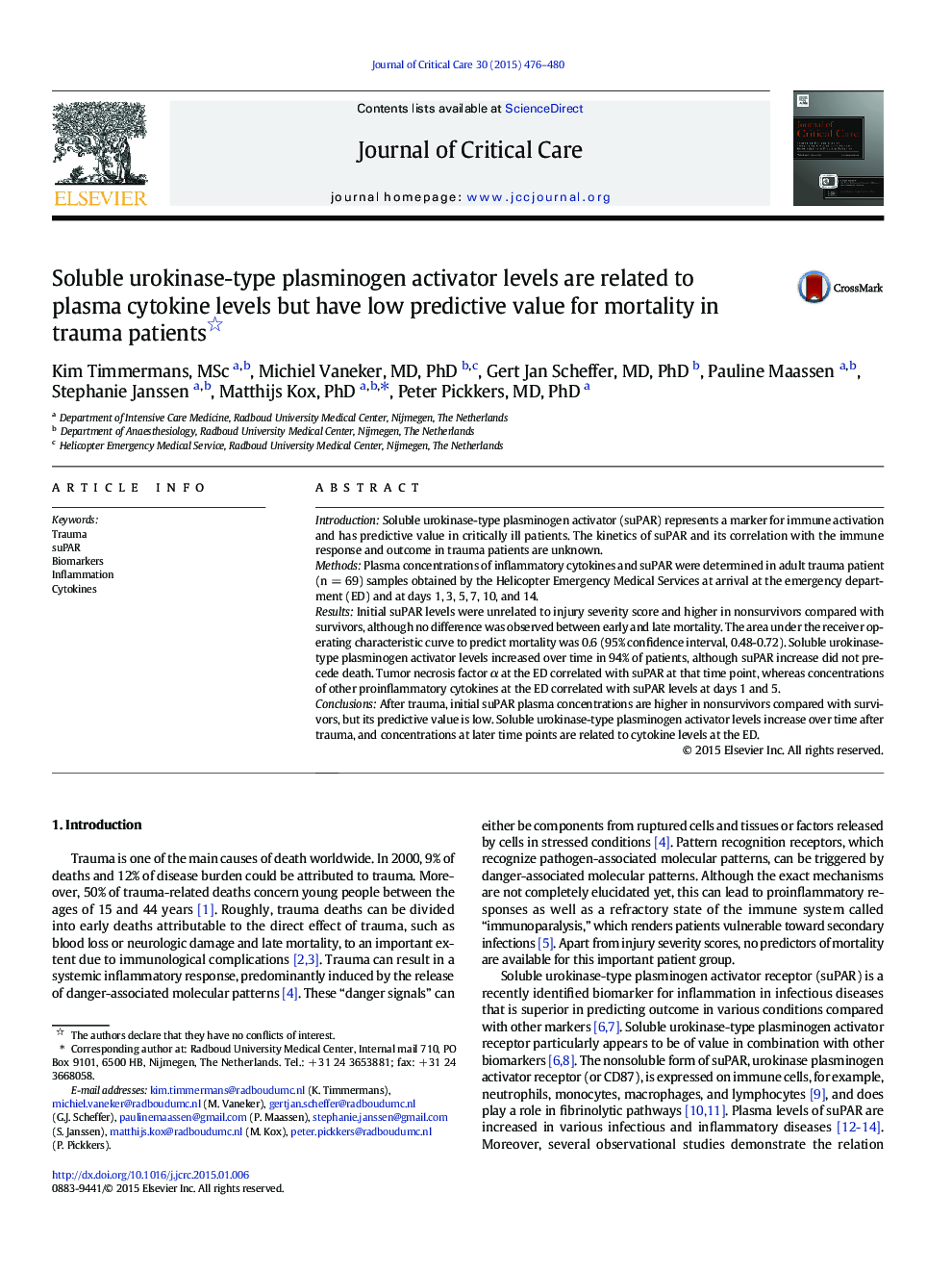| Article ID | Journal | Published Year | Pages | File Type |
|---|---|---|---|---|
| 5885578 | Journal of Critical Care | 2015 | 5 Pages |
IntroductionSoluble urokinase-type plasminogen activator (suPAR) represents a marker for immune activation and has predictive value in critically ill patients. The kinetics of suPAR and its correlation with the immune response and outcome in trauma patients are unknown.MethodsPlasma concentrations of inflammatory cytokines and suPAR were determined in adult trauma patient (n = 69) samples obtained by the Helicopter Emergency Medical Services at arrival at the emergency department (ED) and at days 1, 3, 5, 7, 10, and 14.ResultsInitial suPAR levels were unrelated to injury severity score and higher in nonsurvivors compared with survivors, although no difference was observed between early and late mortality. The area under the receiver operating characteristic curve to predict mortality was 0.6 (95% confidence interval, 0.48-0.72). Soluble urokinase-type plasminogen activator levels increased over time in 94% of patients, although suPAR increase did not precede death. Tumor necrosis factor α at the ED correlated with suPAR at that time point, whereas concentrations of other proinflammatory cytokines at the ED correlated with suPAR levels at days 1 and 5.ConclusionsAfter trauma, initial suPAR plasma concentrations are higher in nonsurvivors compared with survivors, but its predictive value is low. Soluble urokinase-type plasminogen activator levels increase over time after trauma, and concentrations at later time points are related to cytokine levels at the ED.
